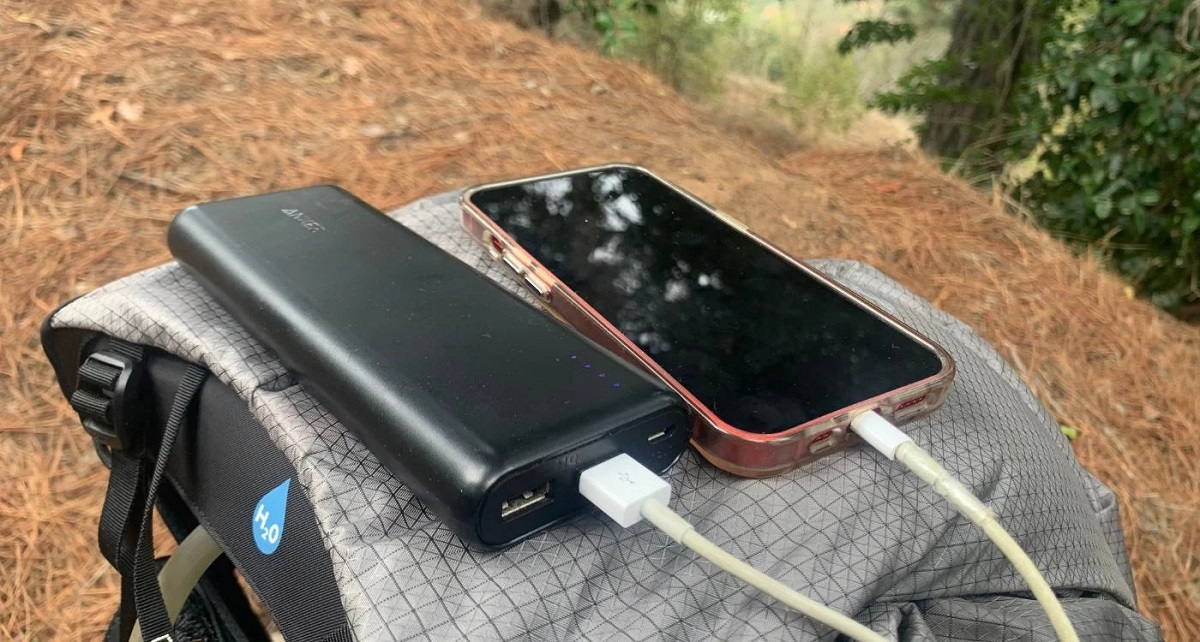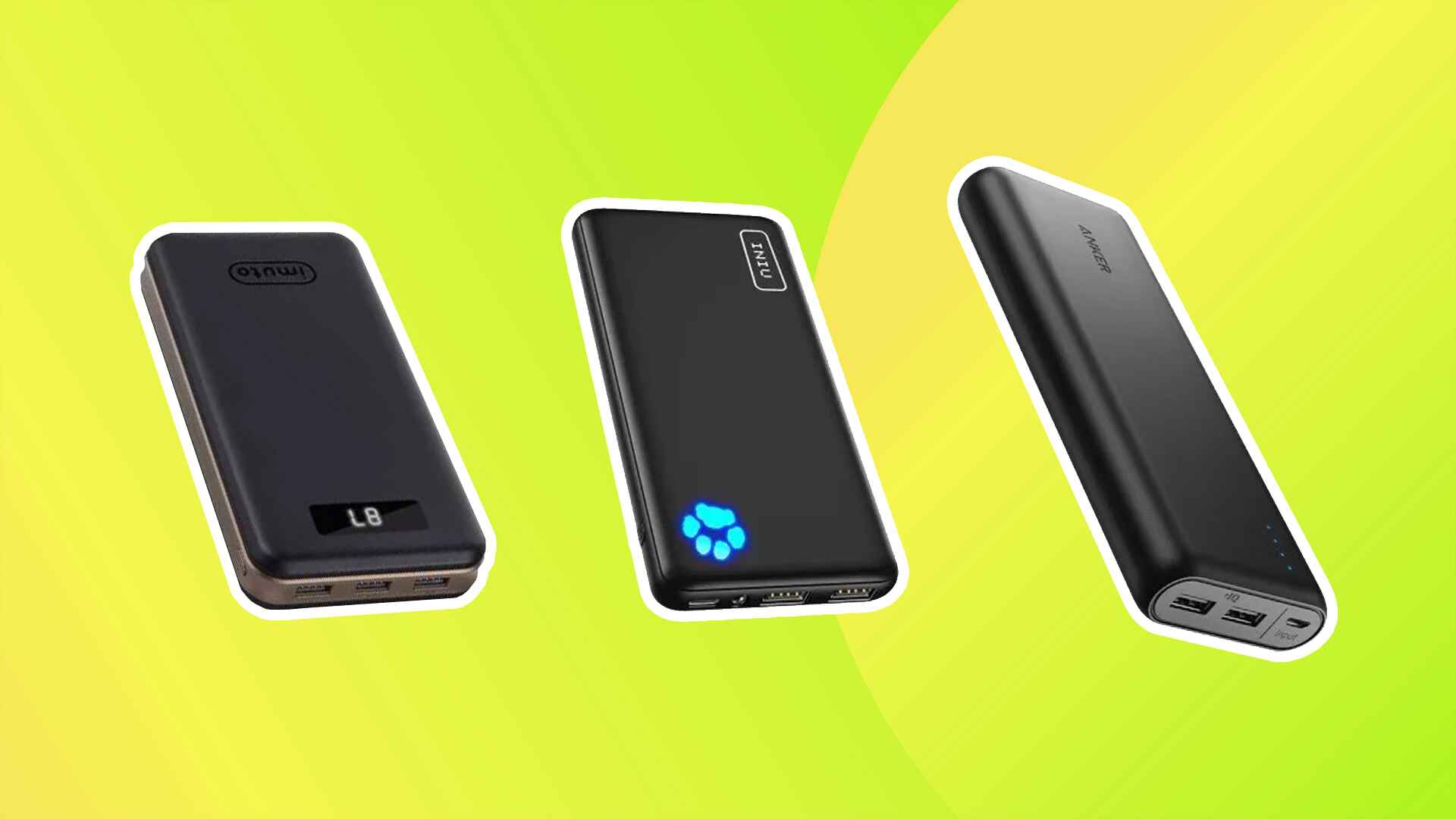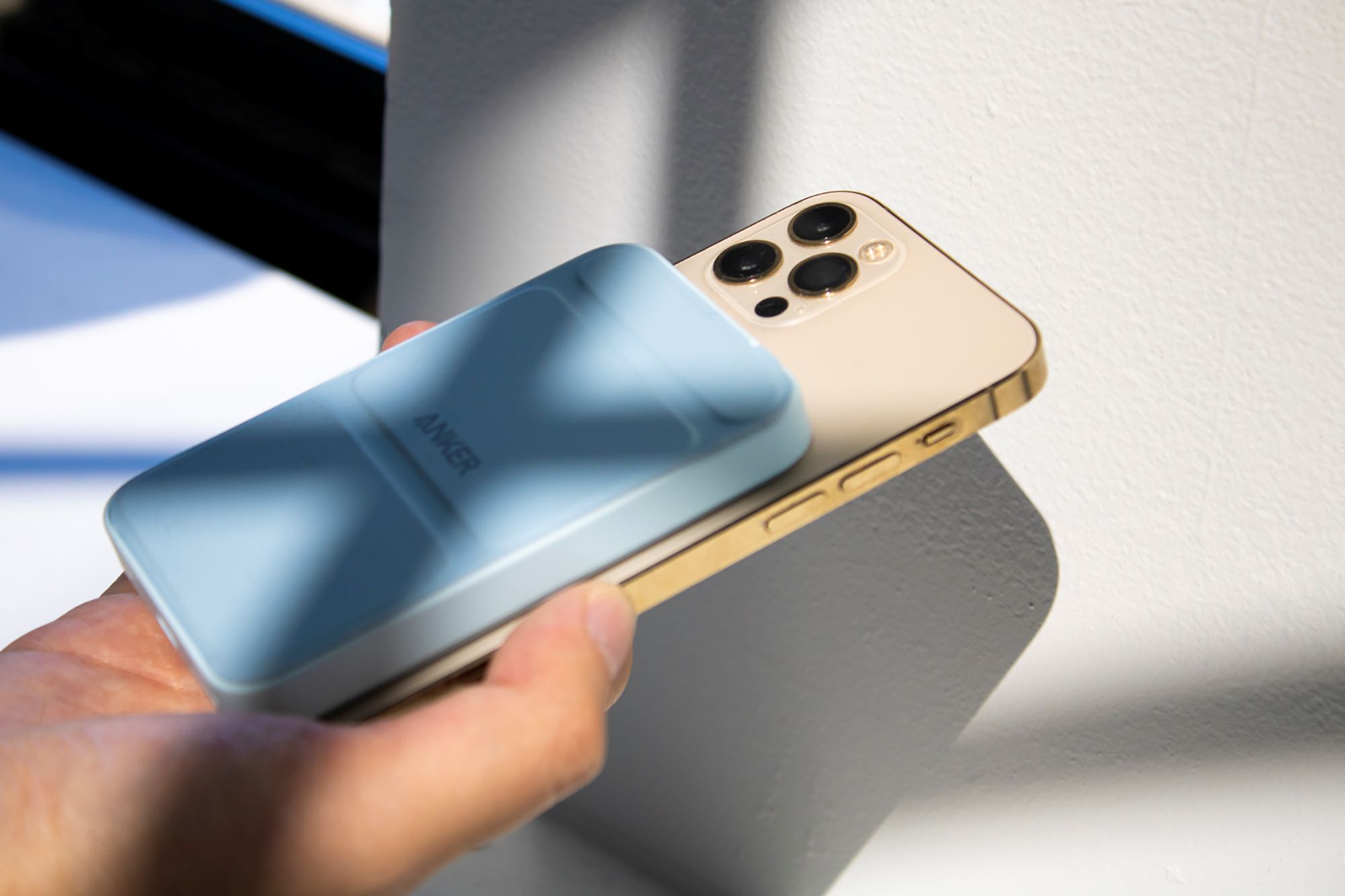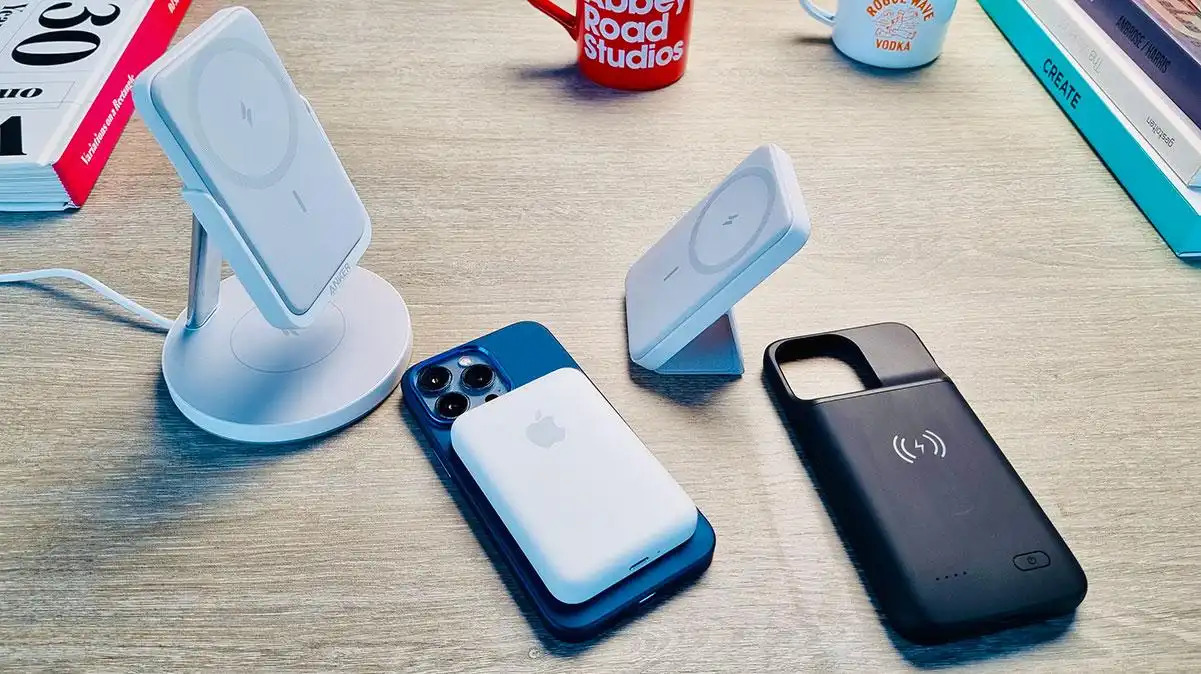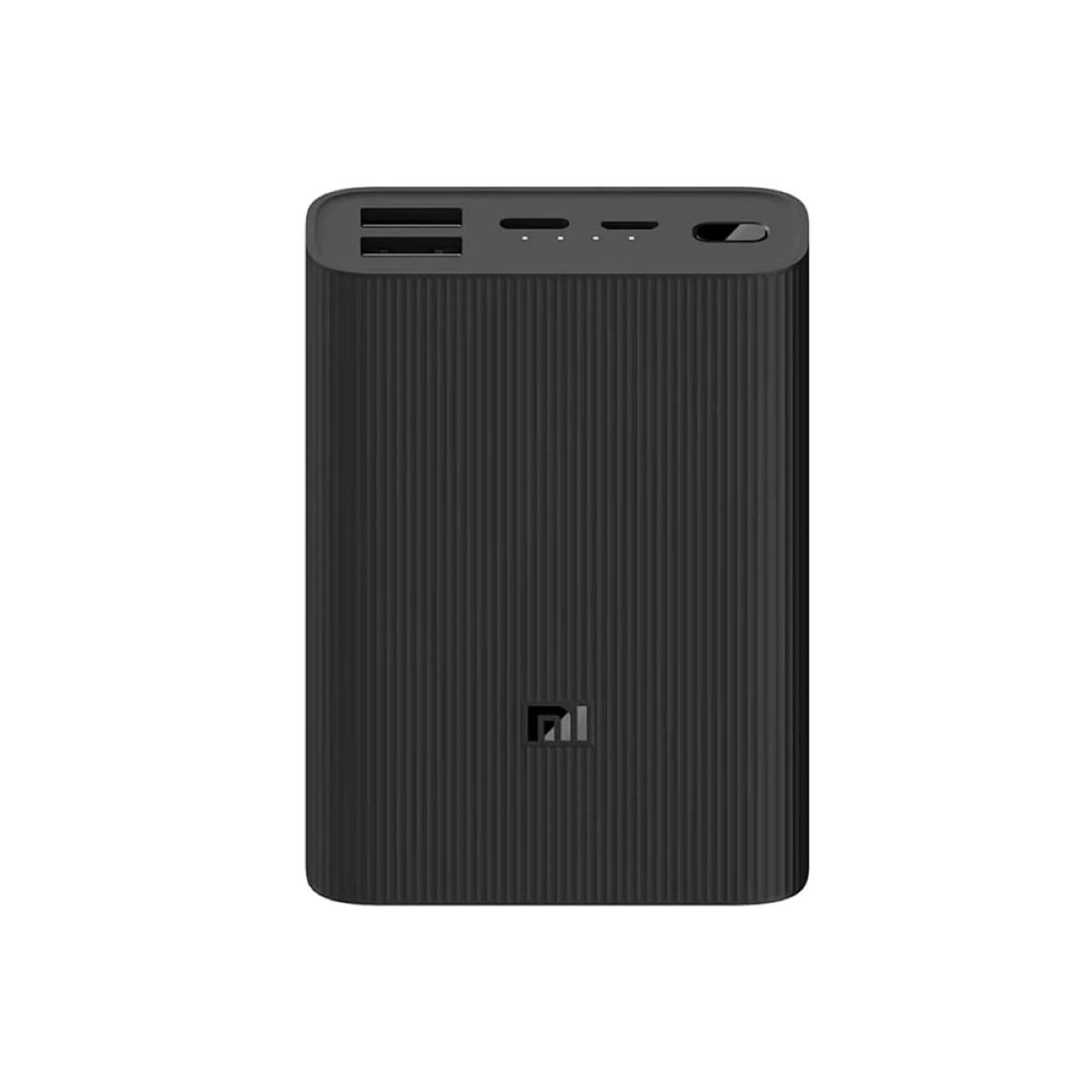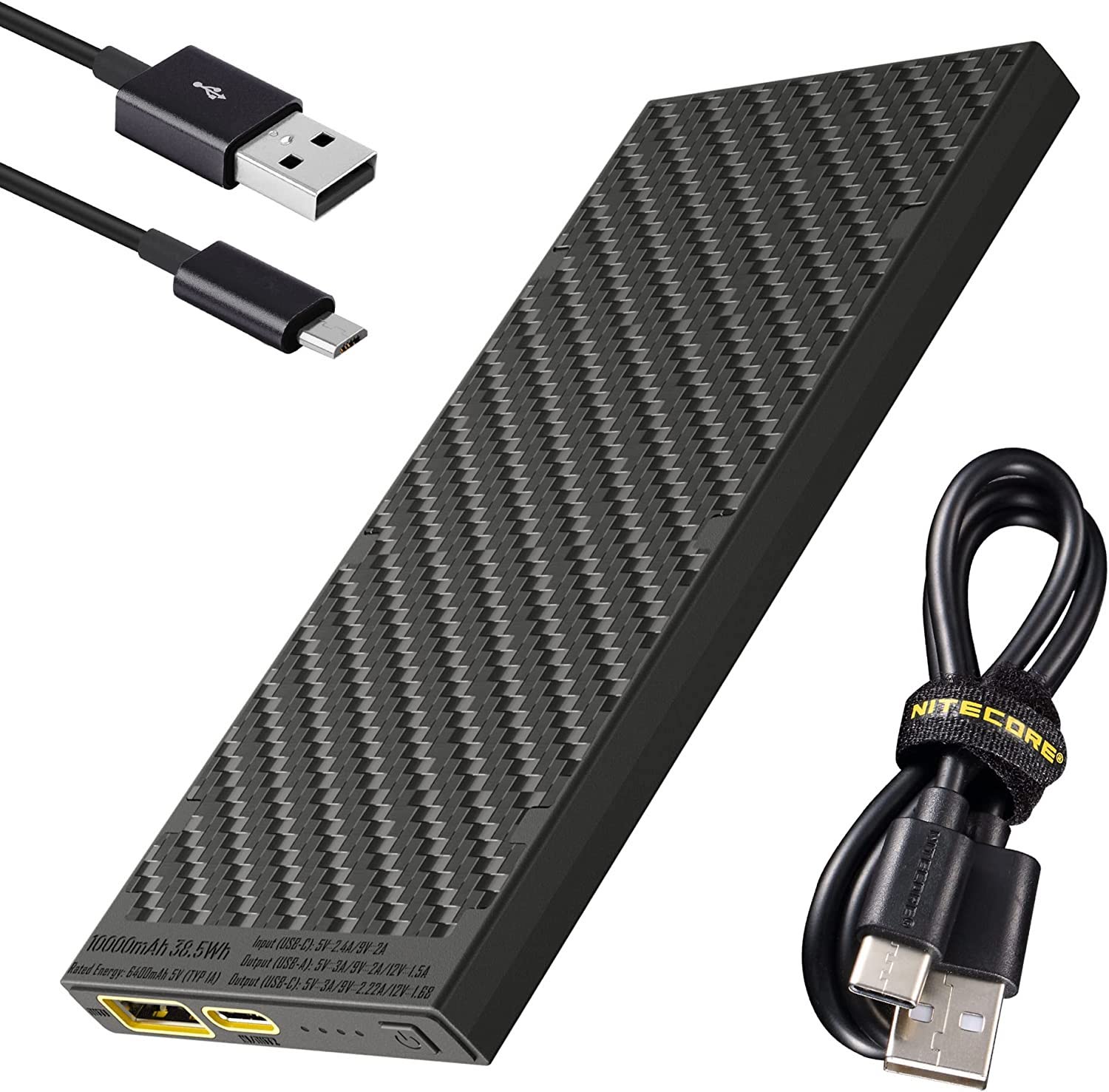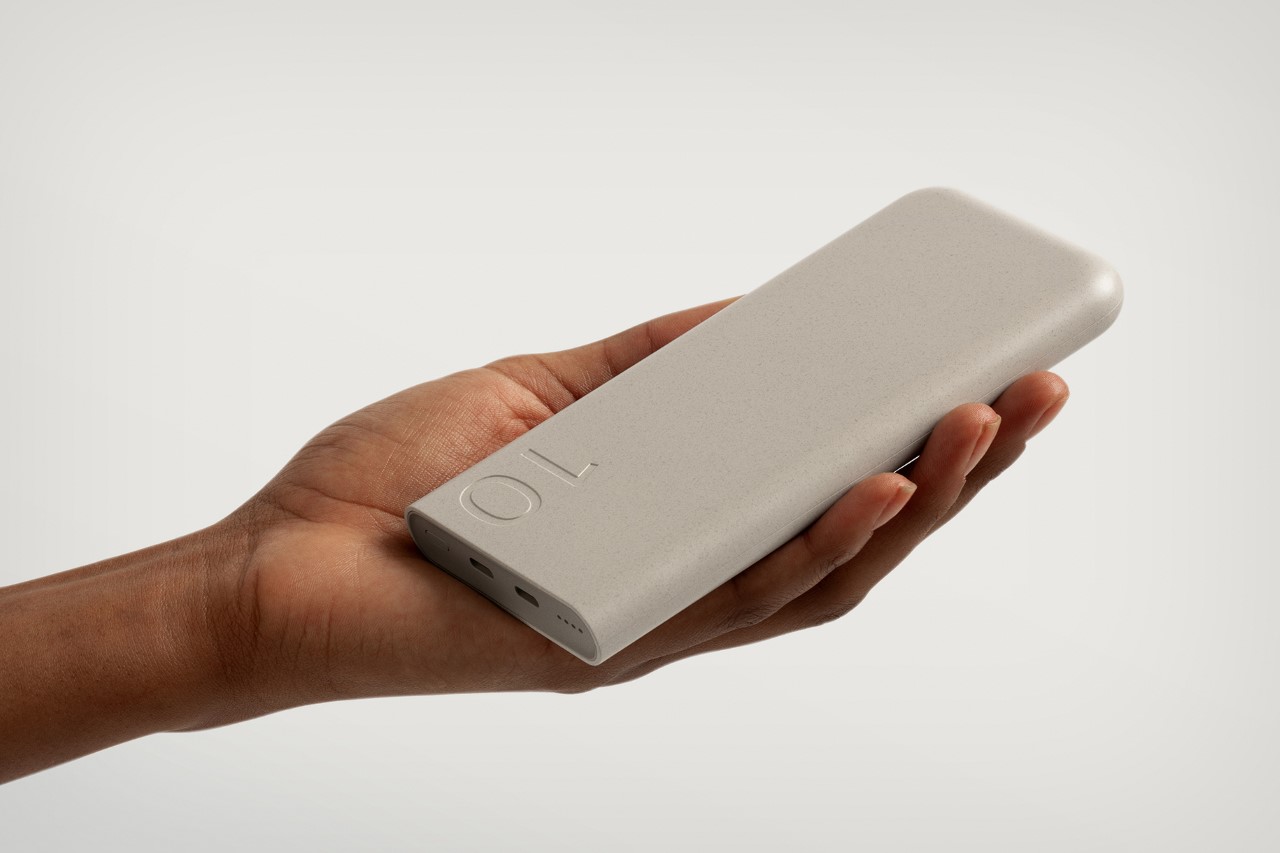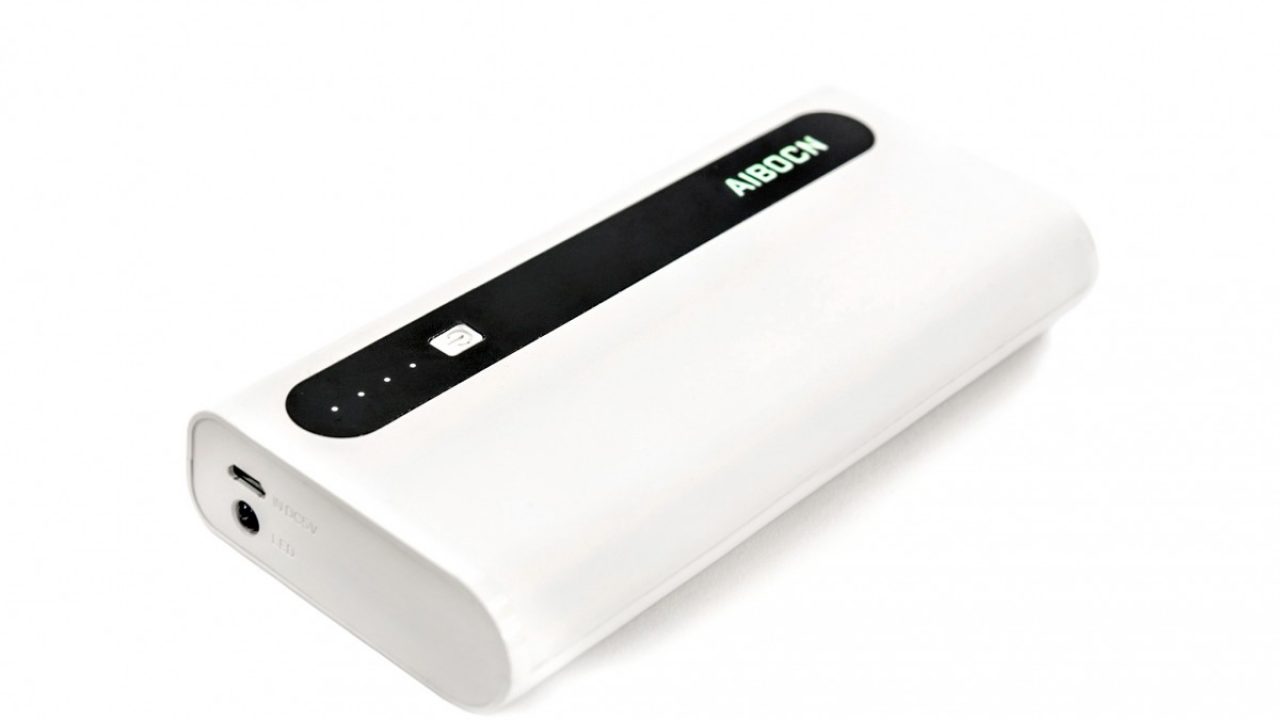Can a 10000mAh Power Bank Fully Charge an iPhone 13?
One of the common questions that arises when considering a power bank for charging an iPhone 13 is whether a 10000mAh power bank has enough capacity to fully charge the device. While the answer to this question depends on several factors, let’s explore the general charging capacity of a 10000mAh power bank and its compatibility with the iPhone 13.
The capacity of a power bank is measured in milliampere-hours (mAh), which represents the amount of charge it holds. In the case of a 10000mAh power bank, it means that it can deliver a total of 10000 milliampere-hours of charge. However, it’s important to note that this capacity doesn’t necessarily translate to a complete charge for the iPhone 13.
The battery capacity of an iPhone 13 is around 3000-3500mAh, depending on the specific model. This means that a 10000mAh power bank theoretically has enough capacity to fully charge the iPhone 13 once, with some charge remaining. However, it’s essential to consider other factors that affect the charging efficiency.
One crucial factor is the power bank’s efficiency and output power. Efficiency refers to the ability of the power bank to convert stored energy into useful charge, and output power determines how fast the power bank can deliver that charge. Lower efficiency and slower output power can result in less effective charging and reduced overall capacity.
Another consideration is the battery health of the iPhone 13. Over time, the battery capacity of a device decreases, which means it may not fully utilize the capacity of the power bank. It’s worth noting that charging a device from 0% to 100% also requires more energy compared to charging it from, for example, 20% to 80%. Therefore, the number of full charges a 10000mAh power bank can provide may vary depending on the starting battery level.
While a 10000mAh power bank can typically provide at least one full charge for the iPhone 13, it may not be sufficient for heavy users who require multiple charging cycles throughout the day. In such cases, consider opting for a power bank with a higher capacity, such as 20000mAh or more, to ensure a longer-lasting and more reliable power source.
Furthermore, it’s always a good practice to keep in mind that different power banks may have varying efficiency levels, so it’s essential to choose a reputable brand and ensure the power bank undergoes proper quality checks to maximize its performance.
In summary, a 10000mAh power bank can generally provide at least one full charge for an iPhone 13, but the actual number of charges can vary based on factors like power bank efficiency and the starting battery level of the device. To ensure optimal power supply, consider higher-capacity power banks for heavy usage or when multiple charging cycles are required throughout the day.
Factors Affecting Charging Capacity of a Power Bank
When it comes to determining the actual charging capacity of a power bank, several factors come into play. Understanding these factors can help you make an informed decision about which power bank is suitable for your needs. Let’s take a closer look at the key factors that affect the charging capacity of a power bank.
1. Power Bank Capacity: The primary factor influencing the charging capacity is the capacity of the power bank itself, usually measured in milliampere-hours (mAh). A higher-capacity power bank can store more charge and is capable of providing multiple charges for your device before it needs to be recharged itself.
2. Efficiency: Power bank efficiency determines how efficiently the stored energy is converted into useful charge. Efficiency can vary between different models and brands of power banks. A higher efficiency rating indicates that a greater percentage of the stored energy is available for charging your device, resulting in a more effective use of the power bank’s capacity.
3. Output Power: The output power of a power bank determines how quickly it can deliver the charge to your device. Higher output power allows for faster charging times. It’s important to check the output specifications of a power bank and ensure compatibility with the charging requirements of your device.
4. Device Battery Health: The condition of the battery in the device you are charging can also impact the charging capacity. As a battery ages, its capacity decreases, so it may not be able to utilize the full capacity of the power bank. Therefore, a power bank’s charging capacity might provide fewer charges for a device with a degraded battery compared to one with a newer battery.
5. Charging Method: The charging method used can affect the overall capacity of the power bank. For example, fast charging methods may consume more power from the power bank and reduce the total number of charges it can provide. Additionally, charging multiple devices simultaneously can decrease the available capacity since the power is divided among the devices being charged.
6. Environmental Factors: Environmental conditions like temperature can also impact the performance and charging capacity of a power bank. Extreme temperatures, whether too hot or too cold, can affect the power bank’s efficiency and potentially reduce its overall capacity.
Considering these factors when selecting a power bank will help you determine if it has sufficient charging capacity for your device and usage patterns. It’s important to strike a balance between capacity, efficiency, and output power to ensure the best charging experience.
The Battery Capacity of an iPhone 13
The battery capacity of a smartphone is a crucial factor to consider when evaluating the charging needs and capabilities of a power bank. In the case of the iPhone 13, Apple has equipped the device with a battery capacity that ensures sufficient usage time. Let’s explore the battery capacity of the iPhone 13 in more detail.
The battery capacity of an iPhone 13 can vary slightly between different models, but on average, it ranges from around 3000mAh to 3500mAh. The capacity is designed to provide an optimal balance between performance and battery life, taking into account the device’s features, display size, processor efficiency, and overall power consumption.
The battery capacity of the iPhone 13 is determined by Apple during the device’s design and manufacturing process. The company aims to provide users with a battery that can sustain a full day of typical usage, including various tasks such as calls, messaging, web browsing, multimedia consumption, and app usage. However, intense usage or certain power-hungry features, such as augmented reality or gaming, can result in higher battery consumption.
It’s worth noting that the battery capacity alone doesn’t determine the device’s battery life. Other factors such as software optimization, display brightness, network connectivity, background app activity, and individual usage patterns also play significant roles in determining how long the battery can last on a single charge.
Apple incorporates advanced power management technologies into its devices to maximize battery efficiency. With features like low-power mode, background app refresh, and adaptive battery charging, the iPhone 13 aims to optimize power consumption and extend battery life. These software optimizations work hand-in-hand with the hardware specifications to provide a reliable and efficient battery performance.
Considering the battery capacity of the iPhone 13 is essential when selecting a power bank. It gives you an idea of the amount of charge the device requires and helps determine the appropriate power bank capacity to ensure sufficient charging capability. A power bank with a capacity higher than the iPhone 13’s battery can provide multiple charges, while one with a capacity close to the device’s battery capacity may offer a single full charge.
Ultimately, understanding the battery capacity of an iPhone 13 helps in making an informed decision about the charging needs and compatibility with a power bank. It ensures that you have an adequate power source to keep your device powered up throughout the day, regardless of your usage patterns.
Calculation of Power Bank Charging Capacity
Understanding how to calculate the charging capacity of a power bank is crucial when determining its suitability for your charging needs. By employing a simple calculation, you can estimate the number of charges a power bank can provide for your device. Let’s delve into the calculation of power bank charging capacity.
1. Determine the power bank capacity: The capacity of a power bank is usually specified in milliampere-hours (mAh). For example, if the power bank has a capacity of 10000mAh, that means it can deliver a total charge of 10000 milliampere-hours.
2. Consider the efficiency factor: No power bank is 100% efficient, and there will be energy lost during the charging process. To account for this, multiply the power bank’s capacity by its efficiency ratio. For instance, if the power bank has an efficiency of 80%, the effective charging capacity would be 10000mAh * 0.8 = 8000mAh.
3. Identify the battery capacity of your device: Determine the battery capacity of your device, which is typically specified in milliampere-hours (mAh). For example, if your device has a battery capacity of 3000mAh, use that value for the calculation.
4. Calculate the number of charges: Divide the effective charging capacity of the power bank (step 2) by the battery capacity of your device (step 3). This will give you an estimate of how many full charges the power bank can provide for your device. In our example, 8000mAh / 3000mAh = 2.67. This means that the power bank can approximately provide 2 full charges for the device.
Keep in mind that this calculation provides an estimate and doesn’t account for factors such as power bank efficiency variation, device power consumption during charging, or starting battery level. The actual number of charges may vary slightly in real-world usage.
Furthermore, it’s essential to consider the battery health of your device. Over time, the battery capacity of a device may degrade, resulting in a reduced charging capacity. The calculation assumes the device has its original battery capacity.
By using this simple calculation method, you can get a rough idea of how many charges a power bank can provide for your device. It is worth noting that it’s always recommended to choose a power bank with a capacity that exceeds your requirements to ensure a reliable and sufficient power supply.
Power Bank Efficiency and Output Power
The efficiency and output power of a power bank are critical factors to consider when evaluating its performance and suitability for your charging needs. Understanding these aspects will help you choose a power bank that delivers optimal charging efficiency and speed. Let’s explore power bank efficiency and output power in more detail.
Efficiency: Power bank efficiency refers to how effectively it converts stored energy into useful charge for your devices. No power bank is 100% efficient, meaning there will be some energy loss during the charging process. Efficiency is typically expressed as a percentage, and higher efficiency ratings indicate a more effective use of the power bank’s capacity.
Efficiency can vary between power bank models and brands. Factors such as the quality of internal components, circuit design, and charging technology employed can all impact the efficiency level. It’s advisable to choose power banks from reputable brands known for their quality and reliable efficiency ratings.
A higher efficiency rating means you can maximize the usable capacity of the power bank, enabling you to get more charges out of it. This is especially important if you rely heavily on your power bank for multiple device charge cycles during the day.
Output Power: The output power of a power bank influences how quickly it can deliver a charge to your devices. It is usually specified in watts (W) and determines the charging speed. Higher output power allows for faster charging times, which can be particularly beneficial when you need to quickly top up your device’s battery.
Power bank output power can vary depending on the specific model and the number of output ports it has. Some power banks offer multiple output ports with varying power ratings, allowing you to charge multiple devices simultaneously at different speeds.
It’s essential to ensure that the output power of the power bank is compatible with your device’s charging requirements. Some devices, such as smartphones or tablets, may have specific charging standards or fast charging technologies that require higher output power for optimal performance. Checking the device’s charging specifications and matching them with the power bank’s output power will ensure efficient and effective charging.
Keep in mind that power bank efficiency and output power can be interrelated. Higher output power may put more strain on the power bank, resulting in potentially lower efficiency. Therefore, it’s crucial to strike a balance between output power and efficiency to ensure the best charging experience.
Considering both efficiency and output power when selecting a power bank will help you choose a reliable and efficient option that meets your charging needs. A power bank with good efficiency and adequate output power will provide you with faster charging times and maximize the capacity utilization, ensuring you have a reliable power source on the go.
Charging an iPhone 13 with a 10000mAh Power Bank
Charging your iPhone 13 with a 10000mAh power bank can be a convenient way to ensure that you have a portable and reliable power source while on the go. Let’s take a look at how well a 10000mAh power bank can charge the iPhone 13 and what factors may affect the charging experience.
The battery capacity of an iPhone 13 typically ranges from around 3000mAh to 3500mAh, depending on the specific model. With a 10000mAh power bank’s capacity, you can expect to fully charge the iPhone 13 at least once, with some charge remaining in the power bank to spare.
However, several factors can influence the actual charging performance. One essential factor to consider is the efficiency of the power bank. Power bank efficiency refers to how effectively it converts stored energy into usable charge. Higher efficiency means more of the power bank’s capacity is available for charging your device. It’s advisable to choose a power bank with a high efficiency rating to ensure maximum utilization of its capacity and better charging performance for your iPhone 13.
Another factor to consider is the output power of the power bank. The output power determines how quickly it can deliver the charge to your device. A power bank with higher output power will charge your iPhone 13 faster than one with a lower output power. It’s important to match the power bank’s output power with the charging requirements of your iPhone 13 to ensure optimal charging speed.
It’s worth noting that charging times may vary depending on the starting battery level of your iPhone 13. Charging a device from 0% to 100% typically takes more energy and time compared to charging it from a partially charged state. Therefore, if your iPhone 13 has some battery life remaining, the 10000mAh power bank might be able to provide more than one full charge.
Furthermore, factors such as the usage of the iPhone 13 while charging and the charging cable quality can impact the overall charging performance. Using power-hungry applications or multimedia content during charging may slow down the charging process. Additionally, utilizing a high-quality charging cable compatible with the iPhone 13’s charging standards can optimize the charging efficiency.
In summary, a 10000mAh power bank can generally provide at least one full charge for your iPhone 13, with some capacity remaining. To ensure optimal charging performance, consider factors such as power bank efficiency, output power, iPhone 13 battery level, and usage patterns. Selecting a high-quality power bank and using a reliable charging cable will help maximize the charging experience and keep your iPhone 13 powered up wherever you are.
Additional Factors to Consider
When it comes to charging an iPhone 13 with a 10000mAh power bank or any power bank in general, there are several additional factors that you should consider to optimize your charging experience. Let’s explore these factors in more detail.
1. Power Bank Quality: Choosing a power bank from a reputable brand known for its quality is essential. It ensures that the power bank is built with safety features, reliable circuits, and durable components. Investing in a high-quality power bank reduces the risk of damage to your device and provides a more reliable and efficient charging experience.
2. Charging Cycles: The number of charging cycles a power bank can provide throughout its lifetime is an important consideration. Over time, the capacity of a power bank can degrade, resulting in reduced charging efficiency. Opting for a power bank with a higher number of charging cycles ensures its longevity and sustained performance.
3. Charging Time: Apart from the capacity of the power bank, the time it takes to fully recharge the power bank itself is worth considering. Look for power banks that support fast charging input methods to minimize downtime and ensure that the power bank is ready to charge your iPhone 13 when you need it.
4. Portability: If you frequently travel or need to charge your iPhone 13 on the go, portability becomes a crucial factor. Look for power banks that are compact, lightweight, and easy to carry. Some power banks are specifically designed for portability with features like slim profiles and built-in charging cables.
5. Safety Features: Safety should always be a priority when selecting a power bank. Ensure that the power bank has built-in protection mechanisms such as overcharge protection, temperature control, short circuit protection, and surge protection. These features safeguard both your iPhone 13 and the power bank itself from potential damage or safety hazards.
6. Additional Features: Consider any additional features that may enhance your charging experience. Some power banks come with LED indicators to show the remaining charge, built-in flashlights for emergencies, or even wireless charging capabilities. These features can provide added convenience and versatility.
By considering these additional factors, you can select a power bank that not only meets your basic charging needs but also offers enhanced functionality, durability, and safety. A well-chosen power bank will ensure that you have a reliable and efficient power source for your iPhone 13, keeping it charged throughout the day and providing peace of mind wherever you go.
Tips for Maximizing Power Bank Usage with an iPhone 13
To make the most of your power bank and ensure optimal charging for your iPhone 13, there are several tips and best practices you can follow. Implementing these strategies will help you maximize the efficiency and longevity of both your power bank and iPhone 13. Let’s explore these tips in more detail:
1. Choose the Right Power Bank: Select a power bank with a capacity that suits your charging needs. If you frequently require multiple charges throughout the day, opt for a higher-capacity power bank to ensure sufficient power supply.
2. Keep Your Power Bank Charged: Regularly charge your power bank when not in use to keep it ready for when you need it. Ideally, aim to maintain it at around 50% to 80% capacity when storing it for an extended period, as extreme low or high charge levels can affect its lifespan.
3. Use High-Quality Charging Cables: Invest in high-quality charging cables that are compatible with your iPhone 13. Good-quality cables ensure efficient power transfer and reduce the risk of overheating or damage to your device.
4. Charge with the Right Output Port: If your power bank has multiple output ports, use the one that provides the appropriate charging speed for your iPhone 13. Some power banks offer dedicated fast-charging ports, so make sure to utilize them for quicker charging.
5. Disable Unnecessary Background Apps: Close or disable any unnecessary background apps on your iPhone 13 while it’s charging. Running multiple apps can consume power and slow down the charging process.
6. Optimize Power Usage: Minimize power-consuming activities while charging, such as intensive gaming or streaming media. These activities can drain power from the power bank and significantly extend charging times.
7. Keep Your iPhone 13 Cool: Avoid exposing your iPhone 13 to excessive heat while charging. High temperatures can decrease the charging efficiency and may even damage the device’s battery. Keep it in a well-ventilated area away from direct sunlight or other heat sources.
8. Consider Battery Charging Cases: If you require prolonged usage or expect limited access to charging, battery charging cases can provide an integrated solution. These cases combine phone protection with an extra battery capacity, eliminating the need for carrying a separate power bank.
9. Regularly Maintain and Clean Your Power Bank: Keep your power bank clean and free from dust or debris. Occasionally wipe it with a soft cloth, and avoid exposing it to water or other liquids. Regular maintenance helps maintain the performance and longevity of your power bank.
By following these tips, you can optimize the usage of your power bank with your iPhone 13, ensuring efficient charging and reliable power supply whenever you need it. Incorporating these practices into your charging routine will help extend the battery life of your iPhone 13 and prolong the lifespan of your power bank.
Conclusion
When it comes to charging your iPhone 13, a 10000mAh power bank can be a valuable accessory to keep your device powered up on the go. Understanding the factors that affect the charging capacity of a power bank, such as efficiency and output power, is essential for choosing the right one. By considering the battery capacity of your iPhone 13 and conducting simple calculations, you can estimate how many full charges a power bank can provide.
Additionally, it’s crucial to consider factors like power bank quality, portability, safety features, and additional functionalities when selecting a power bank. These factors ensure a reliable and efficient charging experience, maximizing the performance and lifespan of both your power bank and iPhone 13.
Implementing tips such as choosing the right power bank, using high-quality charging cables, and optimizing power usage can further enhance your power bank usage with the iPhone 13. By following these tips, you can make the most of your power bank, ensuring fast and efficient charging while maintaining the longevity of your device’s battery.
In summary, a 10000mAh power bank can typically provide at least one full charge for an iPhone 13, accompanied by some remaining capacity. However, factors such as power bank efficiency, output power, starting battery level, and device usage patterns can influence the actual charging performance.
By understanding these factors, considering additional features, and following best practices, you can ensure a reliable and efficient power supply for your iPhone 13, enabling you to stay connected and powered up throughout the day with the help of a 10000mAh power bank.







